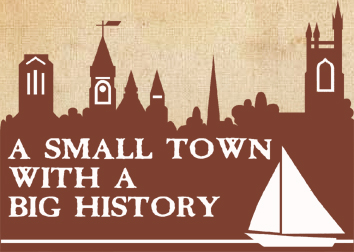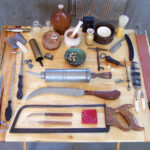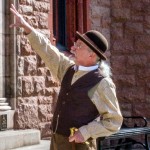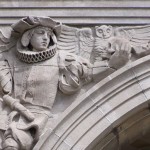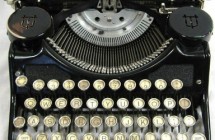Notable Residents
Since the town was first settled in the 1600s, Fairhaven has been home to a number of people whose renown has spread far beyond our boundaries. Here is a list of some of them. Several names are linked to longer biographies on this website.
John Cooke, a Mayflower passenger in 1620 at the age of thirteen, Cooke, his wife Sarah (Warren), and four of their five daughters settled in what’s now Fairhaven in the early 1660s. A Baptist minister, Representative to Plymouth Court, Selectman, and influential land owner, Cooke was one of the most prominent of the original settlers of the town. He died here in 1695, the last surviving male passenger of the Mayflower voyage.
Joseph Bates, Jr., a co-founder of the Seventh-day Adventist Church, lived for about fifty years in Fairhaven, beginning when his parents moved from nearby Rochester when he was one year old. Here, in 1846, he wrote the booklet “The Seventh Day Sabbath, a Perpetual Sign,” urging the return to celebrating the Sabbath on Saturday in order to bring about the Biblical prophecy of the second advent of Christ. Bates moved to Battle Creek, MI, where he died in 1872. His boyhood home in Fairhaven is now a museum.
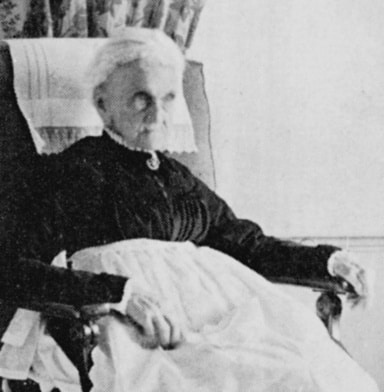
Mary Ann (Hathaway) Tripp
Mary Ann (Hathaway) Tripp, the first American woman to sail around the world, lived most of her life in her father’s hometown of Fairhaven. Married to Capt. Lemuel C. Tripp, she first sailed on one of his voyages in 1833-34. The sixteen-month trip not only circumnavigated the earth, it stopped in China where Mary Ann Tripp became the first American woman to venture inside the walls of Canton. She later sailed on two other round-the-word voyages. Capt. Tripp built the house at the corner of Adams and Spring streets that would later become the summer house of Theodore Thomas (see below). Following her husband’s death, Mary Ann Tripp moved to a home at the northeast corner of Washington and William Streets. She died in 1906 at the age of 96.
Manjiro Nakahama, the first Japanese person to live in the United States, Manjiro was rescued in 1841 from an island in the Pacific Ocean by Fairhaven whaling Capt. William H. Whitfield. Manjiro lived here from 1843 until 1849. Following a stay in California during the Gold Rush, he returned to Japan in 1851. One of Capt. Whitfield’s house’s in the Oxford Village area is a museum operated by the Whitfield-Manjiro Friendship Society.
William Le Baron Jenney, an architect noted for building the first steel framed skyscraper, was born in Fairhaven in 1832, the son of Eliza Le Barron Gibbs and William Proctor Jenney, and grew up here. His interest in architecture may have been inspired by the construction of the First Congregational Church in his neighborhood when he was about 12 years old. After studying in Europe, Jenney moved to Chicago, opening his own architectural firm in 1872. In 1884 he designed the ten-story Home Insurance Building in Chicago, the first tall building using a structural steel skeletal frame, earning Jenney the title “father of the skyscraper.”
Henry H. Rogers, an industrialist in top management of Standard Oil with other involvement in steel, copper, gas, and railroads, was a native of Fairhaven, born here in 1840, and the town’s greatest benefactor. In Fairhaven, Rogers built and donated the Rogers School, Millicent Library, Town Hall, Fairhaven High School, Unitarian Memorial Church and other buildings as well as paving roads and installing the public water system.
Joshua Slocum, the first man to sail alone around the world, rebuilt an old oyster boat named Spray at the waterfront of Poverty Point from 1891 to 1892. Following his move to Boston, Slocum set sail in the Spray in 1895 on his famous three-year circumnavigation.
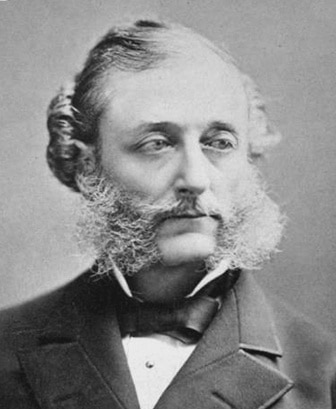
William Bradford
William Bradford, noted romanticist artist and photographer, was born in a part of Fairhaven which eventually became Acushnet, and later divided his time, when not traveling, between a New York studio and homes and studios in Fairhaven. He traveled to the Arctic for subject matter and was sponsored by European patrons, including Queen Victoria. His paintings, photographs and sketches are in many collections, Including the Royal Collection Trust in the United Kingdom. His first studio was located near the intersection of Main and Church streets and jutted out over the water. A later studio was on Union Wharf. He also maintained a studio in New York. He died in 1892 and is buried at Riverside Cemetery.
Theodore Thomas, American’s first renowned orchestra leader and founder of the Chicago Symphony Orchestra, had a summer home surrounded by spacious gardens at the northeast corner of Adams and Spring streets from 1887 until shortly before his death in 1905. He was born in Germany in 1835 and was playing violin in public concerts at the age of six. Coming to America at the age of ten, he played in many bands and orchestras, eventually conducting the New York Philharmonic Orchestra and others. In 1891 he began the Chicago Symphony Orchestra. The Fairhaven summer home, purchased by Thomas’ first wife Minna, later became the home of the Fathers of the Sacred Hearts.
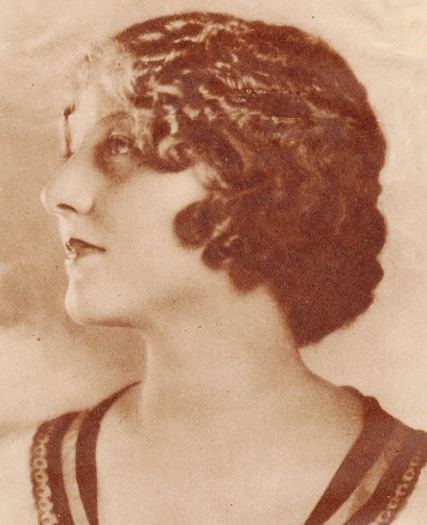
Frances Ford Seymour
Frances Ford Seymour, wife of actor Henry Fonda and mother of actors Peter and Jane Fonda lived on Green Street for several years and graduated from Fairhaven High School in 1925. The Seymours were in Fairhaven from 1922 to 1936 and may have come here through connections with the family of Henry H. Rogers. Frances’ father Eugene Seymour was the uncle of Mary Benjamin, who married Henry H. Rogers Jr.
William H. Hand Jr., a prominent 20th century yacht designer, had his office and boat yard on Middle Street. He designed many small sail boats, V-bottomed power boats, and motorsailers. Hand moved his business from New Bedford to Fairhaven about 1921. Some of his designs were built by local shipyards such as Casey’s Boat Yard and his own boat yard, later leased to the Palmer Scott & Company. The Arctic exploring sloop Bowdoin, designed for Donald B. McMillan, is owned and operated today by the Maine Maritime Academy. Many of his original drawings were lost to flood waters during the Great New England Hurricane of 1938.
Gil Santos, radio announcer known for more than three decades as the “Voice of the New England Patriots,” and as WBZ Radio’s morning sports reporter, grew up in Fairhaven and graduated from Fairhaven High School in 1956. After a start at local radio stations he started working for Boston’s WBZ in 1966. Over the years he broadcast 759 New England Patriots games, including pre-season, regular season, playoff and Super Bowl games. He also commented on games of the Boston Celtics, Providence Friars, the Boston Marathon, the 1984 Olympics, and many other sporting events. He was inducted into the Patriots Hall of Fame in 2013 and was also inducted into the Massachusetts Broadcasters Hall of Fame.
Jon Stetson, an internationally known mentalist, magician and public speaker, grew up and continues to live in Fairhaven while amazing audiences around the world. Beginning with performing magic shows at local libraries, schools and public events, Stetson evolved into a mentalist, combining comedy with mind boggling demonstrations of “sleight of mind.” He has performed for US Presidents, European royalty, in casinos, on cruise ships, at the Magic Castle, and on network television. Stetson is generally “on the road” about 200 days a year. He was the inspiration for the 2008-2015 CBS television series “The Mentalist.”
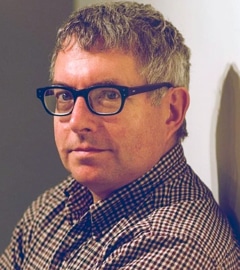
Mark Dion
Mark Dion, a renowned and award winning artist and sculptor with major exhibitions and installations across the US and Europe, spent his childhood in Fairhaven and graduated from Fairhaven High School in 1981. During the next six years, he studied at the University of Hartford, the School of Visual Arts in New York, and the in the Whitney Museum of American Art’s Independent Study Program. His works, made up of elaborately arranged collections of found natural and human-made objects, show how our ideas of history, knowledge and nature are shaped by societal and institutional belief systems. He has been awarded fellowships from the John Simon Guggenheim Foundation and Falmouth University in the UK. In 2017, The Institute of Contemporary Art in Boston hosted “Mark Dion: Misadventures of a Twenty First Century Naturalist”, the largest American survey to date of the Dion’s work. He lives in New York with his wife, artist Dana Sherwood, and their son.
